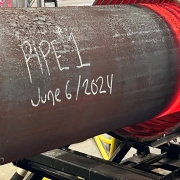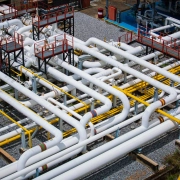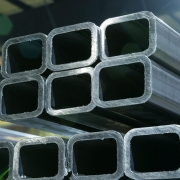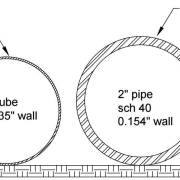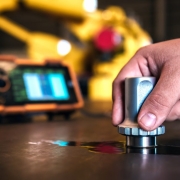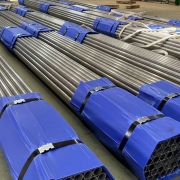How to Produce Large-Diameter Seamless Steel Pipes?
Why are Large-Diameter Seamless Steel Pipes Needed?
Large-diameter seamless steel pipes are essential for industries requiring high-strength, durable, and reliable materials that can withstand extreme pressures and harsh environments. Their seamless construction eliminates weak points, making them ideal for high-pressure applications such as oil and gas transportation, power generation, and petrochemicals. These pipes offer superior corrosion resistance, particularly in offshore, chemical, and extreme temperature conditions, ensuring longevity and minimal maintenance. Their smooth interior enhances fluid and gas flow efficiency, reducing energy loss in long-distance pipelines. Versatile in size, thickness, and material, large-diameter seamless pipes meet stringent industry standards, ensuring safety and compliance in critical infrastructure projects.
Where are Large-Diameter Seamless Steel Pipes Used?
Large-diameter seamless steel pipes are widely used in industries that demand high performance and durability under extreme conditions. They are primarily utilized in the oil and gas sector for long-distance pipeline transportation of crude oil, natural gas, and refined products due to their ability to handle high pressures and harsh environments. These pipes are also used in power generation plants, including nuclear and thermal facilities, for high-temperature and high-pressure steam lines. Additionally, they play a critical role in petrochemical processing, water supply and desalination systems, and heavy-duty construction projects, such as bridges and large-scale industrial structures, where strength and reliability are essential.
Introduction
Producing large-diameter seamless steel pipes is a specialized process that involves various manufacturing techniques, including conventional methods such as piercing and elongation, as well as more advanced approaches like the Medium Frequency Induction Heating + Hydraulic Two-Step Push-Type Thermal Expansion Method. Below is a step-by-step guide to the entire process, integrating this advanced method of thermal expansion.
Manufacturing Process of Producing Large-Diameter Seamless Steel Pipes
1. Raw Material Selection: Steel Billets
The process begins with high-quality steel billets, typically made from carbon steel, low-alloy steel, or stainless steel. These billets are carefully selected based on the application requirements for mechanical properties and chemical composition. Large-diameter seamless pipes are often used in high-pressure or corrosive environments, so the material must meet stringent standards.
Materials: API 5L, ASTM A106, ASTM A335, and other grades based on specific requirements.
2. Billet Heating (Reheating Furnace)
The steel billet is heated to around 1200–1300°C (2200–2400°F) in a reheating furnace. This process softens the billet, making it suitable for piercing and deformation. Uniform heating is essential to avoid defects in the final pipe.
Purpose: Prepare the billet for shaping by heating it to an appropriate temperature.
3. Piercing (Cross-Roll Piercing Mill)
The heated billet is then passed through a piercing mill, where it undergoes the Mannesmann process. In this stage, the solid billet is converted into a hollow shell (also called a “mother pipe”) through the action of a mandrel and rotating rollers.
Result: The billet becomes a thick-walled, hollow shell with initial irregular dimensions.
4. Elongation (Mandrel Mill or Plug Mill)
In the elongation process, the hollow shell is passed through a mandrel mill or plug mill to reduce wall thickness and increase the pipe length. This process gives the pipe its initial shape, but it still needs further dimension control.
Purpose: Achieve the desired wall thickness and length.
5. Sizing and Stretch-Reducing Mill
Next, the pipe goes through a sizing mill or stretch-reducing mill to refine its diameter and wall thickness. This step ensures that the dimensions meet the required specifications for the final product.
Purpose: Fine-tune the outer diameter and wall thickness.
6. Medium Frequency Induction Heating + Hydraulic Two-Step Push-Type Thermal Expansion Method
To produce large-diameter seamless steel pipes beyond the capabilities of conventional sizing methods, the Medium Frequency Induction Heating + Hydraulic Two-Step Push-Type Thermal Expansion Method is applied. This innovative process expands the diameter of the pipe to meet the requirements for large-diameter applications while maintaining uniformity and material integrity.
Main Steps in this Method:
Medium Frequency Induction Heating: The pipe is heated using medium-frequency induction heating, which allows precise control of the temperature along the length of the pipe. This localized heating softens the metal and prepares it for expansion, ensuring minimal thermal stress and deformation during the next step.
Hydraulic Two-Step Push-Type Expansion: After heating, the pipe is subjected to a hydraulic push-type expansion process. This process is carried out in two stages:
First Step: The pipe is pushed forward using a hydraulic system, which expands its diameter by stretching the material. This initial expansion ensures a controlled increase in size without inducing cracks or weaknesses.
Second Step: A subsequent hydraulic push further expands the pipe to the desired diameter while maintaining uniform wall thickness. This second expansion ensures that the pipe maintains structural integrity and meets dimensional tolerances.
Advantages:
Flexible and cost-effective for producing large-diameter pipes.
Maintains consistent wall thickness and mechanical properties.
Reduces the likelihood of defects such as cracks or warping during expansion.
Capable of producing larger diameters (up to 1200 mm or more) than conventional methods.
Applications: This method is widely used for large-diameter seamless pipes required in industries such as oil and gas, chemical processing, and power generation, where large sizes and excellent performance are critical.
7. Heat Treatment
Following expansion, the pipe undergoes heat treatment, depending on the required mechanical properties. Common treatments include:
Normalizing: Refines grain structure and improves toughness.
Quenching and Tempering: Enhances strength and ductility.
Annealing: Softens the pipe and enhances machinability.
The heat treatment also relieves internal stresses induced during the manufacturing process.
8. Straightening
The pipe is straightened to ensure that it conforms to the required geometric tolerances, correcting any bending or warping that occurs during the heating and expansion processes.
9. Non-Destructive Testing (NDT)
Pipes are subjected to non-destructive testing (NDT) to verify their structural integrity. This may include:
Ultrasonic Testing (UT): Detects internal defects.
Magnetic Particle Inspection (MPI): Identifies surface flaws.
Hydrostatic Testing: Ensures the pipe can withstand operational pressures.
10. Cutting and Finishing
The pipe is cut to the required length and prepared for further processing or shipment. Additional finishing operations may include:
Beveling: Pipe ends are beveled for easier welding.
Coating and Lining: Corrosion-resistant coatings or internal linings are applied.
11. Final Inspection and Packaging
The finished pipes are inspected one last time for dimensional accuracy and visual defects. They are then marked with the required specifications and prepared for shipment.
Conclusion: Flexibility in Large-Diameter Seamless Steel Pipes Production
The Medium Frequency Induction Heating + Hydraulic Two-Step Push-Type Thermal Expansion Method offers an innovative and flexible solution for producing large-diameter seamless steel pipes. By integrating this method with traditional manufacturing techniques like piercing, elongation, and heat treatment, manufacturers can produce high-quality, large-diameter pipes suitable for demanding applications such as oil and gas pipelines, structural components, and power generation systems.
This approach ensures that the pipes meet the stringent requirements for strength, corrosion resistance, and dimensional accuracy, making it a preferred choice for critical industries.
If you’re looking for more information or need assistance in selecting the right large-diameter seamless steel pipes for your project, feel free to reach out to us for expert guidance.

